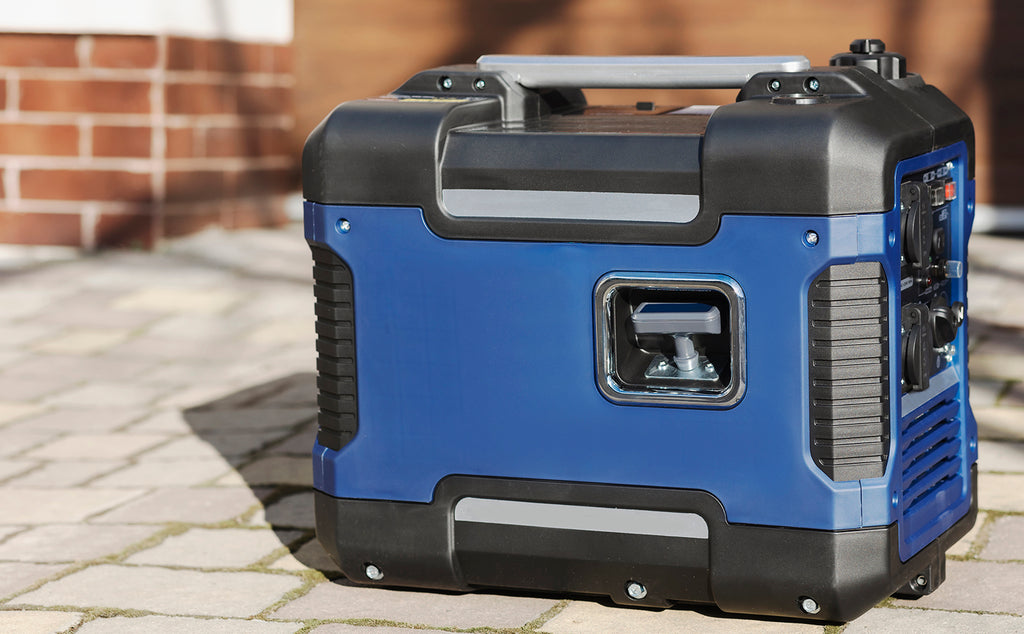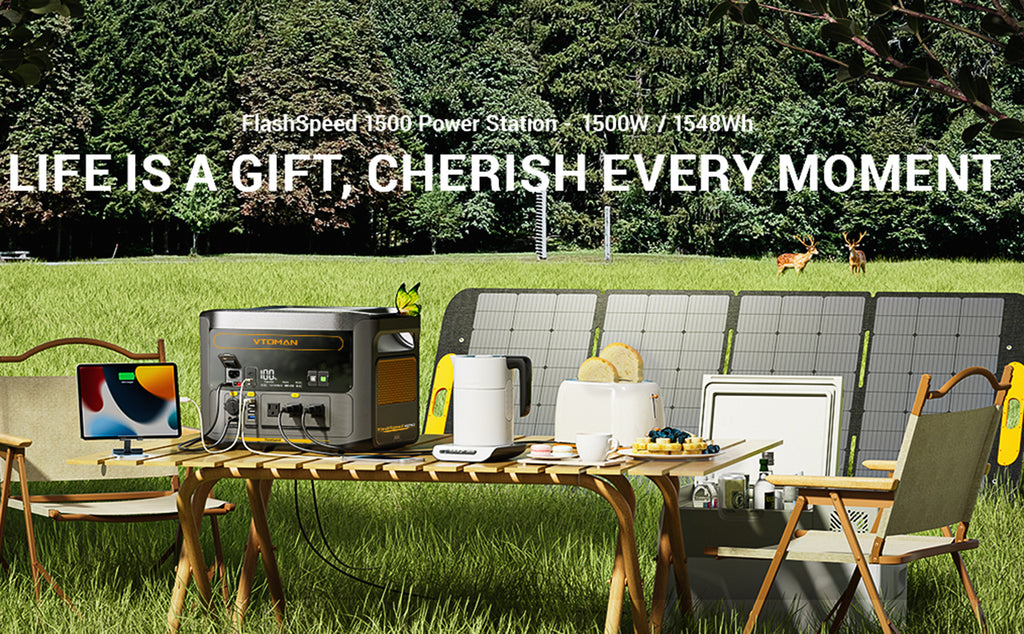In pursuit of reliable and efficient power sources, the choice between inverters and generators has become increasingly relevant. Whether for home backup, outdoor recreation, or professional use, understanding the differences between these two power solutions is crucial in making an informed decision. This article aims to uncover the essentials of both inverters and generators, comparing their functions, benefits, and ideal applications to help you determine which is the right choice for your specific power needs.
What Is an Inverter?
An inverter is an electronic device that converts direct current (DC) to alternating current (AC). This transformation is essential because most household appliances and electronic devices operate on AC, whereas many portable power sources, like batteries, produce DC.

How Does the Inverter Work?
Inverters function by using a series of electronic components to switch the direction of current rapidly, mimicking the sinusoidal wave of AC power. This process typically involves an oscillator, control circuit, transformer, and output circuit.
What Is a Generator?
Typically, a generator is a machine that converts mechanical energy into electrical energy. It operates on the principle of electromagnetic induction, where a conductor moving in a magnetic field induces an electrical current.
Generators come in various forms, including traditional gasoline, diesel, or natural gas-powered models and more environmentally friendly options like solar generators. Each type has unique characteristics, making them suitable for different scenarios.
How Does the Generator Work?
Generators work by rotating a coil within a magnetic field, which induces a flow of electrons. This process is usually fueled by gasoline, diesel, or natural gas, making generators a go-to choice for high-power applications.
Solar generators, however, work on a different principle. They begin with solar panels converting sunlight into DC electricity. This DC electricity is then stored in batteries. When it's time to use the stored power, a built-in inverter within the solar generator converts this DC electricity into AC power, suitable for running household appliances. This process makes solar generators a greener, quieter, and more sustainable option, especially for low to medium-power applications and in areas with ample sunlight.
Each type of generator, whether fuel-based or solar, has its specific working mechanism, advantages, and applications. Their common goal, however, remains the same: to provide reliable electrical power when and where it's needed most.
What Are the Differences Between Generators and Inverters?
When contemplating the choice between generators and inverters, it's essential to understand their fundamental differences, which extend beyond their basic functionality.
Operation Principle: Generators convert mechanical energy into electrical energy, usually through the combustion of fuels like gasoline, diesel, or natural gas. In contrast, inverters don't generate power; they transform existing direct current (DC) into alternating current (AC). This fundamental difference in operation influences their other characteristics.
-
Power Capacity: Generators typically have a higher power output, making them ideal for situations requiring substantial energy, such as powering entire homes during outages or running heavy-duty equipment. Inverters, however, usually cater to lower power requirements. They are perfect for smaller-scale applications like powering laptops, small appliances, or lights during camping trips.
-
Noise and Emissions: One of the most noticeable differences is in noise and emissions. Generators, particularly those running on fossil fuels, tend to be louder and emit fumes. This can be a significant consideration in residential areas or for those conscious of their carbon footprint. Inverters are much quieter and cleaner, as they don't rely on burning fuel but merely convert the form of electricity.
-
Portability and Weight: Inverters are generally more compact and lightweight compared to traditional generators. This makes them easily portable and suitable for outdoor activities like camping or tailgating. Generators, due to their more complex machinery and fuel storage, are heavier and less portable, often requiring a fixed installation spot or considerable effort to move.
-
Maintenance: In terms of upkeep, inverters require less maintenance than generators. Generators have engines and moving parts that need regular servicing, fuel refills, and checks for wear and tear. Inverters, lacking these complex mechanical components, demand minimal maintenance, mostly limited to ensuring clean and secure connections and occasional battery replacement if they are part of a battery-powered system.
-
Cost and Efficiency: The initial cost and running expenses can differ significantly. Generators might have a higher upfront cost, especially larger models, and ongoing fuel costs. Inverters are usually more cost-effective initially and don't incur fuel costs, but their efficiency and output are constrained by the capacity of the DC source they are connected to.
-
Application Suitability: Generators are more suited for high-demand, less frequent uses, and areas with unreliable power sources. Inverters are ideal for regular, low-power consumption tasks, particularly in conjunction with renewable energy sources like solar panels.
Do All Generators Have an Inverter?
Not all generators have an inverter. Traditional generators produce raw AC power, while inverter generators produce DC power and convert it to AC, offering cleaner and more stable electricity, beneficial for sensitive electronics.
Why Do Solar Generators Have a Built-in Inverter?
Solar generators have a built-in inverter due to the nature of the electricity they produce. These generators harness energy from the sun, converting it into electrical power using photovoltaic (PV) panels. However, the electricity generated by solar panels is in the form of direct current (DC). Most household appliances and tools, however, operate on alternating current (AC), which is the standard form of electricity supplied by the grid.
The built-in inverter in a solar generator plays a pivotal role in converting the DC power from the solar panels into AC power. This conversion is essential to make the electricity usable for a wide range of common appliances and devices. Without this inverter, the DC power generated by solar panels would be incompatible with most of the electrical equipment we use daily.
Why Choose a Solar Generator
Opting for a solar generator taps into the essence of modern, eco-conscious living. These generators offer a sustainable alternative by harnessing solar energy, reducing reliance on fossil fuels, and cutting down carbon emissions. They're particularly beneficial in areas with high electricity costs or unreliable grid access, providing a cost-effective and reliable power source during outages or in remote locations.

Solar generators also excel in user-friendliness and convenience. They operate silently, making them suitable for residential areas and outdoor activities, and require minimal maintenance, appealing to those seeking simplicity in use. Their portability further enhances their appeal, allowing for flexible use across various settings. In short, solar generators blend environmental responsibility with practicality, aligning with contemporary lifestyle choices that prioritize sustainability and ease of use.
What Is the Best Solar Generator?
The FlashSpeed 1500W/1548Wh 400W Solar Generator is the best solar generator for its robust power and swift charging capabilities. With a hefty 1500W output and a 1548Wh capacity, capable of a 3000W peak, it effortlessly supports a wide range of appliances. Its rapid charging feature, allowing a full charge in just one hour with 1500W AC input, sets it apart, alongside the flexibility of 400W solar and 200W DC inputs.

Enhancing its appeal is the FlashSpeed 1500's capacity expansion option, doubling storage from 1548Wh to 3096Wh, and its UPS function, ensuring continuous power during outages. The stackable design for easy transport and storage, coupled with the reliable LiFePO4 battery, assures both convenience and longevity, making it an ideal choice for a variety of power needs.
Final Words
The final decision between an inverter and a generator hinges on your specific power requirements, usage scenarios, and environmental preferences. Inverters offer a quieter, more portable solution for lower power needs, ideal for regular use with small appliances and electronics. Generators, on the other hand, provide robust power solutions for demanding situations and are particularly useful in areas with unreliable power sources or for high-energy-consuming tasks.
For those prioritizing eco-friendliness and sustainability, solar generators like the FlashSpeed 1500W/1548Wh 400W Solar Generator present an optimal choice, marrying high performance with environmental responsibility.












